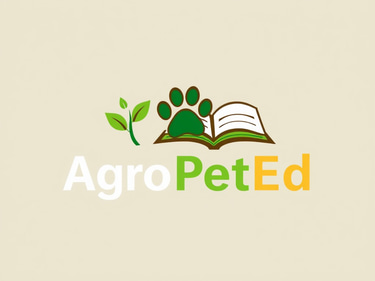
Recent Advances in Swine Production Technology
Global pork production is facing rising demand alongside environmental, health, and economic challenges. Recent studies project that global demand for animal-based foods could increase by 70% by 2050, requiring greater efficiency and reduced impacts.
ANIMAL PRODUCTION
6/4/20253 min read
Global pork production is facing rising demand alongside environmental, health, and economic challenges. Recent studies project that global demand for animal-based foods could increase by 70% by 2050 (1), requiring greater efficiency and reduced impacts. In response, Swine Production 4.0 integrates advanced technological solutions: smart sensors, AI-driven data analytics, automated feeding and ventilation systems, robotics, and cutting-edge genetic techniques (2, 3). Key innovations include:
Sensors and Digital Monitoring (IoT): Devices to track environmental variables (temperature, humidity, gases) and animal metrics (feed intake, weight, activity) (3, 4).
Automation and Robotics: Machines performing routine tasks like cleaning, feeding, or animal sorting (2, 5).
Artificial Intelligence (AI) and Big Data: Algorithms processing vast datasets to optimize rearing conditions and management (6, 7).
Advanced Genetics: Genomic selection and gene-editing techniques (e.g., CRISPR) to enhance productivity and disease resistance (8, 9).
Precision Nutrition: Sensor- and AI-based feeding models that tailor rations to individual or group needs (10, 11).
Each of these areas has seen breakthroughs that improve productivity, sustainability, and animal welfare. Below, we detail these innovations with concrete examples and proven impacts.
Automation and Robotics in Swine Farming
Full automation in swine farms combines robotics, cloud computing, and AI for operational tasks (2). Examples include:
Cleaning Robots: Danish company Washpower’s automated washers clean pens without human intervention. In U.S. trials, they reduced cleaning time from 5 hours to just 1 hour per section (12, 13), speeding up production cycles and freeing labor for higher-value tasks (12).
Smart Feeders: Automated systems dispense feed and water based on each pig’s body condition and growth stage, reducing waste and improving feed conversion rates (10, 14).
Climate Control: AI-integrated systems adjust ventilation, heating, and humidity in real time using sensor data.
Reproduction: Cameras and sensors detect estrus behaviors, while automated semen storage and climate-controlled farrowing crates enhance breeding efficiency (15).
In short, the industry is moving toward "smart farms" where machines handle routine work, boosting consistency and output.
Sensors and Digital Monitoring (Precision Livestock Farming)
Precision swine farming relies on sensor networks tracking:
Environment: Temperature, humidity, ammonia, CO₂, and dust levels (3).
Animals:
RFID ear tags monitor individual feed intake and movement.
3D cameras (e.g., Fancom eYeGrow) estimate weight with 97% accuracy (16).
2D/3D imaging detects lameness or aggressive behaviors (e.g., tail biting) (17).
Acoustic sensors (e.g., Boehringer’s SoundTalks) identify coughs or stress vocalizations, flagging respiratory diseases before outbreaks (4).
Data is transmitted via 5G or LPWAN to cloud platforms, where software correlates environmental, health, and productivity metrics. The "Precision Pigging" project (University of Calgary) used this approach to reduce nitrogen excretion by 11% through optimized feeding (11), giving farmers a real-time dashboard for data-driven decisions (3, 18).
Artificial Intelligence and Data Analytics
AI transforms raw data into actionable insights:
Health Monitoring: Algorithms analyze video to detect diarrhea or fever before clinical signs appear (20, 21).
Environmental Control: The Proactive Pig Project (NC State, USA) uses neural networks to tailor ventilation/heating per pig, minimizing heat stress (7, 22, 23).
Nutrition & Breeding: Big-data platforms optimize diets and predict estrus, improving average daily gain (ADG) and conception rates (7, 14).
Genetic Selection: Computer vision measures complex traits (meat quality, behavior) for objective breeding (20, 24).
In essence, AI enhances sensors and automation, making farms more efficient and humane (7, 19).
Advanced Genetics and Biotechnology
Genomics is revolutionizing swine breeding:
Genomic Selection: Companies like PIC use DNA sequencing to select genes for faster growth, feed efficiency, and disease resistance. In 2020, this added €3.45 per carcass (8).
Gene Editing (CRISPR): Develops pigs resistant to PRRS and African swine fever (9).
AI Applications: 3D cameras in slaughterhouses grade carcass quality, refining breeding programs (8, 9).
These tools accelerate genetic progress, yielding hardier, more productive animals.
Precision Nutrition
Advanced systems customize feeding:
ESF (Electronic Sow Feeding): RFID tags dispense feed by gestation stage (26).
Daily Phase Feeding: Replaces traditional 3-phase systems, adjusting rations daily to herd needs (11).
Real-Time AI: Platforms like Skov’s ProGrow use sensors to redistribute feed, cutting waste (29).
Studies show this approach reduces nitrogen excretion and environmental footprint (11).
Impacts: Sustainability, Welfare, and Economics
Sustainability:
Lower ammonia, methane, and phosphate emissions (11).
Reduced energy and feed use per animal (7, 11).
Animal Welfare:
Early disease detection (4).
Precise climate and nutrition reduce stress and aggression (31).
Economic Efficiency:
In the U.S., smart systems prevent $900 million/year in losses from suboptimal conditions (22).
Robotics cut labor costs and raise output per m² (13).
Conclusion
Innovations in automation, IoT, AI, genetics, and nutrition are reshaping swine production into a more productive, sustainable, and ethical system. By adopting these technologies, producers achieve:
Higher profitability.
Reduced environmental impact.
Improved animal health and welfare.
Sources: Industry studies (5, 11), academic research (7, 22), and technical publications (4, 8), with validated on-farm results.
(1, 6, 7, 18, 19, 21, 22, 23) Proactive Pig Project to use AI data to help manage barn conditions
(2, 4, 10, 14, 15, 30) Automatizar granjas porcinas para dedicarnos a tareas de alto valor
https://porcinews.com/sera-posible-automatizar-completo-nuestras-granjas-porcinas-dedicarnos-exclusivamente-tareas- alto-valor-anadido/
(3, 16, 17, 31) Smart farming: la tecnología que nos llega - Artículos - 3tres3 LATAM, la página del Cerdo https://www.3tres3.com/latam/articulos/smart-farming-la-tecnologia-que-nos-llega_12345/
(5, 12, 13) foodnationdenmark.com
https://foodnationdenmark.com/wp-content/uploads/Washpower-Spanish.pdf
(8, 9, 20, 24, 25) Nuevas tecnologías aplicadas al servicio del progreso genético porcino - Un ejemplo práctico
(11) Sostenibilidad a través de la alimentación porcina de precisión - All About Feed ES - Puerta a la Industria Global de Alimentación
https://es.allaboutfeed.net/sostenibilidad-a-traves-de-la-alimentacion-porcina-de-precision/
(26, 27, 28, 29) Innovative Feeding Systems Used in Pig Farms - Tonisity International https://www.tonisity.com/innovative-feeding-systems-used-in-pig-farms/
AgroPetEd
Information about animals and agricultural practices
© 2025. All rights reserved.
